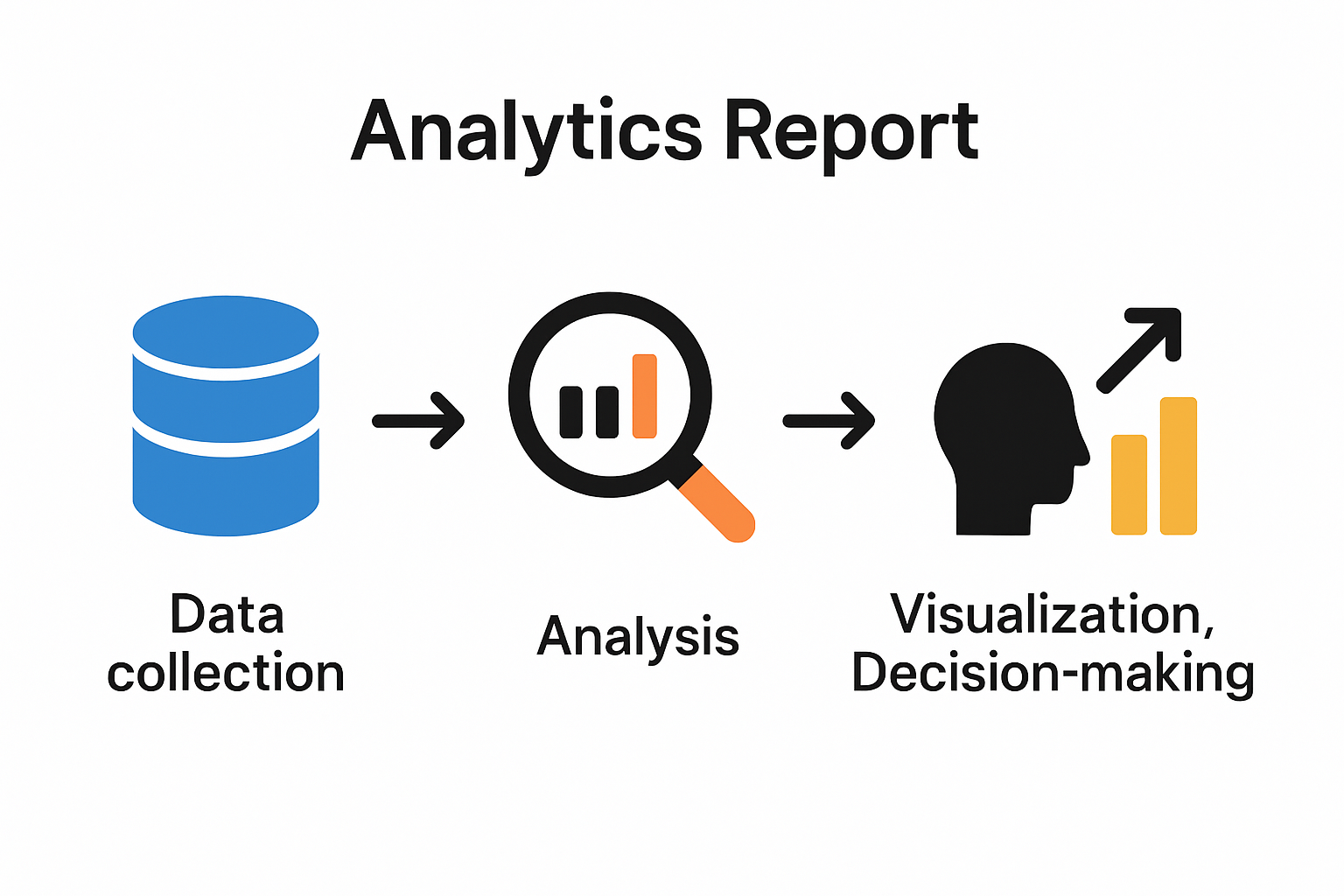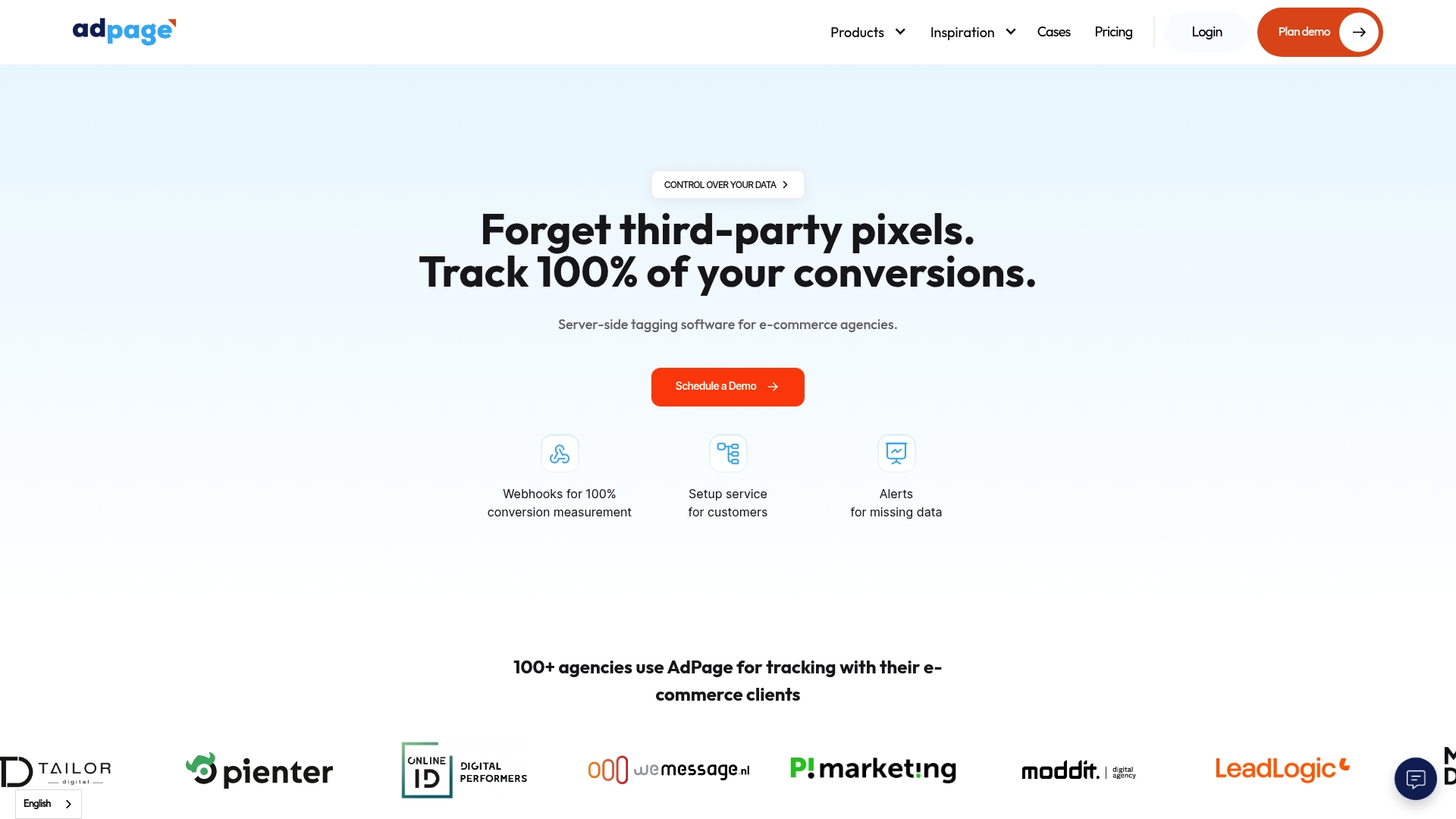Businesses are sitting on heaps of data, but most barely scratch the surface of what these numbers reveal. Only 37 percent of firms use analytics to drive real decision making, even though those that do grow up to five times faster. You might think fancy dashboards or complicated reports are what set leaders apart, but that is not it. The most successful companies ask sharper questions and spot the hidden stories their competitors completely overlook.
Table of Contents
- What Analytics Reports Reveal About Your Business
- Decoding Customer Behaviour Patterns
- Performance And Efficiency Indicators
- Strategic Decision Making
- Essential Metrics To Track For Growth
- Revenue And Financial Performance Metrics
- Customer Acquisition And Retention Metrics
- Operational Efficiency Metrics
- How To Use Reports To Improve Conversion Rates
- Identifying User Behaviour Patterns
- Optimizing Conversion Funnel Performance
- Predictive Analytics And Conversion Strategies
- Best Practices For Effective Reporting In 2025
- Data Governance And Infrastructure
- Advanced Analytics And Technology Integration
- Compliance And Ethical Reporting
Quick Summary
| Takeaway | Explanation |
|---|---|
| Analytics Reports Drive Growth | Analytics reports provide critical insights into business performance, enabling organizations to turn raw data into actionable intelligence, essential for strategic growth. |
| Identify Key Metrics for Success | Businesses must track essential metrics such as revenue growth rates, customer acquisition costs, and operational efficiency to understand performance and identify areas for investment. |
| Optimise User Engagement | By analyzing user behavior patterns and optimizing the conversion funnel, organizations can enhance user experiences and increase conversion rates through targeted interventions. |
| Leverage Advanced Technologies | Employing advanced analytics, AI, and machine learning can transform reporting practices, enabling organizations to gain real-time insights and predictive intelligence for better decision-making. |
| Ensure Ethical Reporting Practices | Effective reporting requires a focus on compliance and ethical standards, prioritizing data privacy and transparent reporting to build trust and demonstrate responsible data management. |
What Analytics Reports Reveal About Your Business
Analytics reports serve as powerful microscopes that unveil critical insights about business performance, customer behavior, and strategic opportunities. Understanding these reports transforms raw data into actionable intelligence that can drive significant organizational growth.

Decoding Customer Behaviour Patterns
Analytics reports provide unprecedented visibility into how customers interact with digital platforms. By meticulously tracking user journeys, businesses can understand complex navigation patterns and engagement metrics. Research from the University of Edinburgh reveals that businesses can identify their most frequently visited web pages, enabling strategic optimization of high-traffic areas.
Customer behavior analysis goes beyond simple page views. It encompasses:
- User Flow Tracking: Understanding precise paths customers take through websites
- Interaction Metrics: Measuring time spent on specific pages
- Conversion Funnel Analysis: Identifying potential drop-off points in customer journeys
These granular insights help organizations design more intuitive user experiences and targeted marketing strategies.
Performance and Efficiency Indicators
Analytics reports are not merely descriptive but predictive tools that offer comprehensive performance snapshots. Government research on business intelligence demonstrates that systematic data analysis enables evidence-based decision-making.
Key performance indicators revealed through analytics include:
- Traffic sources and acquisition channels
- Conversion rates across different customer segments
- Revenue attribution and marketing campaign effectiveness
- User demographic and behavioral segmentation
By translating complex data into comprehensible insights, local government analytics frameworks highlight the transformative potential of understanding analytics reports.
Strategic Decision Making
The true power of analytics reports lies in their ability to inform strategic decisions. Businesses can move beyond guesswork, using empirical data to validate hypotheses and predict future trends. This approach eliminates subjective decision-making, replacing intuition with objective, data-driven strategies.
Analytics reports enable organizations to:
- Predict customer preferences
- Identify emerging market opportunities
- Allocate resources more efficiently
- Develop targeted marketing campaigns
Ultimately, understanding analytics reports is not just about collecting data but interpreting it meaningfully to drive organizational growth and competitive advantage.
Essential Metrics to Track for Growth
Successful businesses understand that tracking the right metrics is fundamental to sustainable growth. Without precise measurement tools, organizations risk making decisions based on incomplete or misleading information.
Revenue and Financial Performance Metrics
Financial metrics provide a clear snapshot of business health and potential for expansion. Research from ResearchGate highlights the critical importance of understanding revenue growth rates as a key indicator of organizational progress.
Crucial financial metrics include:
- Revenue Growth Rate: Measures percentage increase in total revenue
- Gross Profit Margin: Indicates overall profitability
- Net Profit Margin: Reveals actual earnings after all expenses
- Cash Flow Analysis: Tracks money movement within the business
These metrics help businesses identify strengths, weaknesses, and potential areas for strategic investment.
Customer Acquisition and Retention Metrics
Understanding customer dynamics is paramount for sustainable growth. Optimized Business Analytics emphasizes the significance of tracking customer-related metrics to drive strategic decision-making.
Key customer metrics include:
- Customer Acquisition Cost (CAC): Total expense of acquiring a new customer
- Customer Lifetime Value (CLV): Predicted total revenue from a customer relationship
- Retention Rate: Percentage of customers who continue doing business
- Churn Rate: Proportion of customers who stop using services
These metrics provide insights into marketing effectiveness and customer satisfaction levels.
Operational Efficiency Metrics

Operational metrics reveal how effectively a business utilizes its resources and processes. By monitoring these indicators, organizations can identify bottlenecks, streamline operations, and improve overall productivity.
Critical operational metrics encompass:
- Productivity Ratios: Measuring output against input.
- Operational Costs: Tracking expenses related to business functions
- Process Efficiency: Evaluating time and resource allocation
- Employee Performance Indicators: assessing workforce productivity
These metrics enable businesses to make data-driven decisions that enhance operational performance and drive continuous improvement.
By systematically tracking these essential metrics, businesses can create a comprehensive understanding of their performance, identify growth opportunities, and develop targeted strategies for sustainable expansion.
To provide a consolidated overview, the following table summarizes key business metrics essential for growth, as detailed above.
| Metric Category | Example Metrics | Purpose |
|---|---|---|
| Revenue & Financial | Revenue Growth Rate, Gross Profit Margin, Net Profit Margin, Cash Flow Analysis | Assess profitability and financial health |
| Customer Acquisition & Retention | Customer Acquisition Cost (CAC), Customer Lifetime Value (CLV), Retention Rate, Churn Rate | Evaluate customer relationships and marketing effectiveness |
| Operational Efficiency | Productivity Ratios, Operational Costs, Process Efficiency, Employee Performance Indicators | Optimise resource use and streamline operations |
How to Use Reports to Improve Conversion Rates.
Conversion rate optimization represents a critical strategy for businesses seeking to transform analytics insights into tangible revenue growth. By systematically analyzing and interpreting performance data, organizations can develop targeted approaches to enhance user engagement and increase successful transactions.
Identifying User Behaviour Patterns
Research from the Journal of Medical Internet Research demonstrates the profound importance of understanding user engagement metrics. Detailed analytics reports provide nuanced insights into how potential customers interact with digital platforms, revealing critical conversion barriers.
Key behavioral metrics to examine include:
- Bounce Rate: Indicates pages where users quickly exit
- Time on Site: Measures user engagement duration
- Page View Sequences: tracks user navigation patterns
- Interaction Density: Evaluates depth of user engagement.
By meticulously analyzing these indicators, businesses can pinpoint precisely where potential customers disengage and develop strategic interventions.
Optimizing Conversion Funnel Performance
Medical research on digital engagement highlights the significance of streamlining user journeys. The checkout process represents a critical conversion point where marginal improvements can yield substantial results.
Strategic optimization techniques include:
- Reducing checkout steps
- Providing clear progress indicators
- Implementing transparent pricing
- Offering multiple payment options
- Minimising form complexity
These targeted modifications can dramatically reduce cart abandonment and enhance overall conversion performance.
The following table organizes key strategies for optimizing the conversion funnel, outlining their main focus and intended effect.
| Strategy | Main Focus | Intended Effect |
|---|---|---|
| Reducing checkout steps | Simplification of process | Lower friction, reduce abandonment |
| Providing progress indicators | Transparency & guidance | Increase user confidence, reduce drop-off |
| Transparent pricing | Clarity of costs | Prevent surprises, improve trust |
| Multiple payment options | Payment flexibility | Accommodate user preferences |
| Minimising form complexity | Ease of input | Speed transactions, increase completion rates |
Predictive Analytics and Conversion Strategies
Advanced research in predictive analytics demonstrates how machine learning models can transform raw data into actionable conversion strategies.
Predictive approaches enable businesses to:
- Anticipate customer preferences
- Develop personalized marketing interventions
- Identify high-potential customer segments
- Create dynamic pricing strategies
- Design targeted remarketing campaigns
By leveraging sophisticated analytical tools, organizations can move beyond reactive strategies, proactively designing experiences that naturally encourage conversions.
Successful conversion rate optimization demands a holistic approach. Reports are not merely retrospective documents but dynamic tools for continuous improvement, enabling businesses to create increasingly refined, user-centric experiences that drive sustainable growth.
Best Practices for Effective Reporting in 2025
As digital ecosystems become increasingly complex, organizations must adopt sophisticated reporting strategies that transform raw data into meaningful, actionable insights. Effective reporting in 2025 demands a holistic approach that balances technological innovation with strategic thinking.
Data Governance and Infrastructure
Government digital transformation research emphasizes the critical importance of establishing robust data governance frameworks. A comprehensive approach ensures data quality, consistency, and accessibility across organizational systems.
Key infrastructure considerations include:
- Centralized Data Repositories: Consolidating information from multiple sources
- Clear Data Ownership Protocols: Defining roles and responsibilities
- Standardized Metadata Management: Ensuring consistent data interpretation
- Scalable Storage Solutions: Supporting growing data volumes
Enterprise data management experts recommend implementing centralized data warehouses or data lakes that enable seamless information integration and simplified access for authorized users.
Advanced Analytics and Technology Integration
The future of reporting lies in leveraging cutting-edge technologies that transform passive data collection into dynamic, predictive intelligence. Educational technology research highlights the significance of cultivating a data-driven organizational culture.
Technological best practices include:
- Implementing machine learning algorithms
- Utilizing real-time data processing
- Integrating artificial intelligence for predictive analytics
- Developing customizable dashboard interfaces
- Ensuring cross-platform compatibility
These technological innovations enable organizations to move beyond retrospective reporting, creating forward-looking insights that drive strategic decision-making.
Compliance and Ethical Reporting
With increasing regulatory scrutiny, effective reporting must balance technological capability with stringent ethical standards. Organizations must prioritize data privacy, security, and transparent reporting mechanisms.
Critical compliance considerations include:
- Implementing robust data protection protocols
- Maintaining transparent data collection practices
- Ensuring user consent and control
- Developing clear reporting ethics guidelines
- Regular security and compliance audits
By embedding ethical considerations into reporting frameworks, businesses can build trust and demonstrate commitment to responsible data management.
Effective reporting in 2025 is not merely about collecting data but transforming information into strategic intelligence. Organizations that successfully integrate technological innovation, robust governance, and ethical practices will gain significant competitive advantages in an increasingly data-driven business environment.
Frequently Asked Questions
What are analytics reports and why are they important for businesses?
Analytics reports are detailed documents that provide insights into business performance, customer behavior, and operational efficiency. They are crucial as they enable organizations to make data-driven decisions that can lead to significant growth.
How can businesses track key metrics for growth?
Businesses can track essential metrics by implementing data analytics tools that monitor revenue growth, customer acquisition costs, retention rates, and operational efficiency indicators. Regularly reviewing these metrics helps identify areas for improvement and investment.
What strategies can improve conversion rates using analytics data?
To improve conversion rates, businesses can analyze user behavior patterns to identify drop-off points in the conversion funnel and optimize processes accordingly. Strategies include simplifying checkout steps, enhancing user journey transparency, and leveraging predictive analytics for targeted marketing.
What best practices should organizations follow for effective reporting in 2025?
Organizations should establish robust data governance frameworks, integrate advanced analytics technologies, and prioritize compliance with ethical reporting standards. This approach ensures that data is accurately collected, analyzed, and used for strategic decision-making.
Unlock the True Power of Your Analytics Reports in 2025
Are you frustrated by missing or incomplete conversion data and feeling uncertain about the accuracy of your analytics reports? The article highlights a critical issue that businesses face in 2025: traditional analytics tools are often unreliable due to data loss and unreliable tracking. With so many businesses struggling to transform raw numbers into real growth, enhanced tracking and precise data collection have become essential for informed decision-making and conversion rate optimisation.

It is time to leave behind outdated solutions that cannot keep up with digital privacy changes and evolving customer journeys. AdPage's server-side tagging platform addresses your main pain points by enabling accurate, privacy-compliant capture of every conversion on platforms like Shopify or WooCommerce. You gain better consent management, seamless integration, and the confidence that you are not missing key insights that drive strategic growth. Do not let incomplete analytics hold you back any longer. Discover how AdPage's conversion tracking tools can help you accurately measure success and empower your next marketing move-start now and turn insights into results.



.png)
